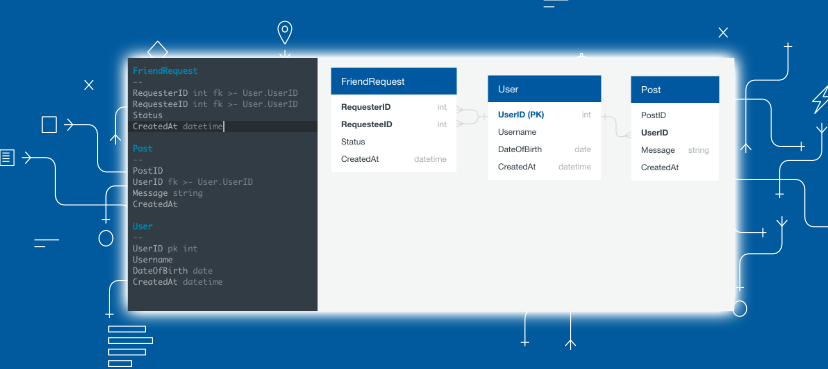
Simplify Database Design with Quick Database Diagrams
Introduction:
In today’s data-driven world, businesses rely heavily on well-structured databases to store and manage their information efficiently. However, designing a database schema can be a complex and time-consuming task. This is where Quick Database Diagrams (QuickDBD) comes to the rescue, providing a user-friendly and intuitive solution for creating professional database diagrams with ease. Let’s delve into the features and benefits of this remarkable tool.
Streamlined User Experience:
One of the first things you’ll notice when using QuickDBD is its intuitive user interface. The website is clean, modern, and easy to navigate, making it a breeze to create, edit, and visualize your database diagrams. Whether you’re a seasoned database administrator or a novice developer, QuickDBD simplifies the entire process, eliminating the need for cumbersome manual design or expensive database modeling software.
Rapid Prototyping and Collaboration:
QuickDBD shines when it comes to rapid prototyping. With its drag-and-drop functionality, you can effortlessly create tables, define relationships, and annotate your diagrams, significantly reducing the time and effort required for database design. Additionally, the tool allows for seamless collaboration among team members. You can share your diagrams with colleagues, clients, or stakeholders, fostering effective communication and ensuring everyone is on the same page.
Extensive Database Support:
QuickDBD supports a wide range of database management systems (DBMS), including popular ones like MySQL, PostgreSQL, Oracle, and Microsoft SQL Server. This versatility means you can design diagrams specific to your preferred DBMS, ensuring compatibility and accurate representation of your database structure. Whether you’re building a small-scale application or a large-scale enterprise system, QuickDBD has you covered.
Automated Code Generation:
Beyond its diagramming capabilities, QuickDBD goes the extra mile by offering automated code generation. Once you’ve finalized your database design, you can generate SQL scripts for your chosen DBMS with a single click. This feature not only saves valuable time but also ensures accuracy and consistency in your database implementation. By eliminating manual code writing, QuickDBD empowers developers to focus on other critical aspects of their projects.
Interactive and Responsive Design:
QuickDBD understands the importance of visualizing complex database structures in a user-friendly manner. Its interactive design allows you to zoom in, zoom out, and pan around your diagrams effortlessly. Whether you’re working on a small laptop screen or a large desktop monitor, QuickDBD adapts to your device, ensuring an optimal viewing experience. The tool’s responsive design means you can work on your diagrams anytime, anywhere, using your preferred device.
Excellent Documentation and Support:
QuickDBD is not just a tool; it’s a comprehensive resource for database design. The website provides detailed documentation and tutorials to guide you through the process, from getting started to advanced diagramming techniques. Additionally, the QuickDBD team offers excellent customer support, ensuring that any questions or concerns you may have are promptly addressed.
Conclusion:
Quick Database Diagrams (QuickDBD) is a game-changer in the field of database design. With its streamlined user experience, rapid prototyping capabilities, extensive database support, automated code generation, interactive design, and excellent documentation, QuickDBD empowers developers and database administrators to create efficient and scalable database schemas in a fraction of the time. Whether you’re a solo developer or part of a team, QuickDBD’s intuitive features and collaborative environment will help you streamline your database design process and bring your projects to life more effectively than ever before.
Give QuickDBD a try today and experience the power of simplified database diagramming firsthand. Visit their website at https://www.quickdatabasediagrams.com/ to explore the tool and unlock a new level of efficiency in your database design endeavors.

